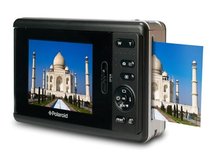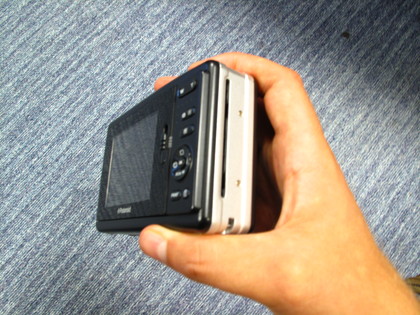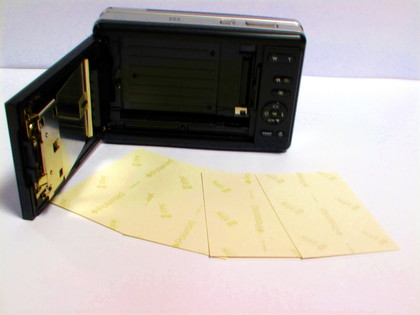Hands on: Polaroid Two review
All the fun of Polaroid in a brick-like box

We'll be the first to admit that the idea of seeing Polaroid technology within a 5MP camera kind of excited us.
Unless you are extremely passionate about photography, most of the pictures you take on a digicam will gather digital dust on you hard drive, only getting the occasional airing on photo sites like Flickr or even Facebook.
So, when the Polaroid Two arrived at TechRadar towers, we got it out of its box faster than a child unwrapping his Christmas presents, only to find the camera had been replaced with a massive brick. Then we realised the massive brick was actually the camera.
Maybe we've been blessed with the deluge of super skinny digicams to enter the market in recent years, but the Polaroid Two is an unwieldy beast of a camera. It's a massive 35mm in width, which makes it one of the chunkiest cameras around, even when compared to the chassis of a DSLR.

But as we all know, you shouldn't judge a camera by its cover, as it's inside that counts.
Luckily, in the Polaroid Two, you have yourself a mini photo developing lab. Flick open the back switch and there's an area to put in the photo-sensitive paper, which comes in 2-inch x 3-inch size.
Once the paper is in – and don't squander it as the cost is around £8 for 30 sheets – press the On button for a few seconds and you are ready for some instant photo gratification.
Get daily insight, inspiration and deals in your inbox
Sign up for breaking news, reviews, opinion, top tech deals, and more.

Features on the camera are minimal, but you do get a 4x digital zoom (ooh, blocky), a number of scene modes (Fireworks, Candlelight, Pets etc) and even a Video Recording mode. You can even sort out the size of the images and quality. There are options for Sharpness, Saturation, White Balance and ISO but they are greyed out – presumably these can't be changed manually.
Taking images with the camera is as simple as pointing and shooting. There's no viewfinder, so all your lining up has to be done via the 3.0-inch LCD screen. This is no bad thing, and anyone familiar with taking photos with a digicam will not run into any problems.
An SD card slot is include and a little bit of internal memory is provided, but this is only good for five shots.
As you can create your own images, within the camera, there's also some in-camera tweaking that can be done. You can crop and image, sort out the red eye, give the printout a border if you desire and choose how many prints you want the camera to take.
Marc Chacksfield is the Editor In Chief, Shortlist.com at DC Thomson. He started out life as a movie writer for numerous (now defunct) magazines and soon found himself online - editing a gaggle of gadget sites, including TechRadar, Digital Camera World and Tom's Guide UK. At Shortlist you'll find him mostly writing about movies and tech, so no change there then.
